This section describes axis systems that can be used in a Multi-Slide Lathe machine environment, in particular:
By default, the Reference Machining Axis System
![]() defined on the Part Operation is assigned to the main spindle.
defined on the Part Operation is assigned to the main spindle.
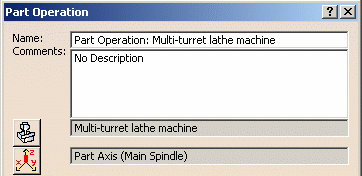
You can edit the Part Axis System (PAS) by clicking
![]() in the Spindle tab of the Machine Editor.
in the Spindle tab of the Machine Editor.
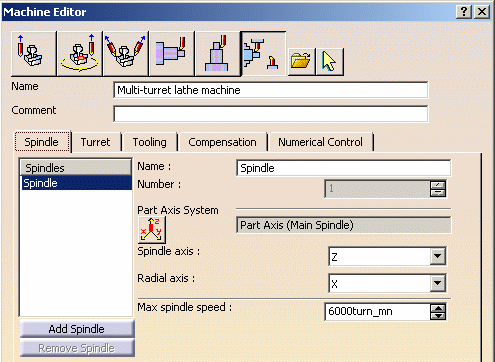
The following dialog box appears:
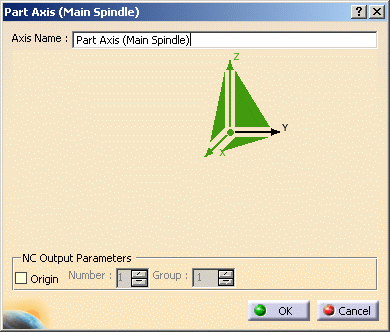
For Turning operations:
For NC data output, a Machining Axis System Change must be inserted in the Program when changing Spindle.
Turning Tool Axis System defines the turret plane, which allows realistic representation for:
The pictures below illustrate for a given tool (Setup angle = 0deg / Radial axis X) the behavior when moving (Cut/Paste) an operation from Turret.1 to Turret.2.
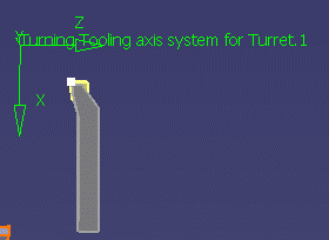
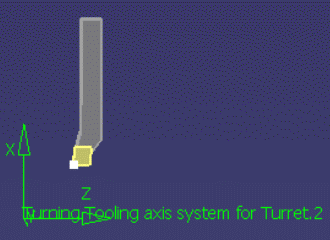
Note that milling and drilling tools are positioned according to the tool axis defined at operation level.
Advantages are:
You can edit the Turning Tool Axis System by clicking
![]() in the Turret tab of the Machine Editor.
in the Turret tab of the Machine Editor.
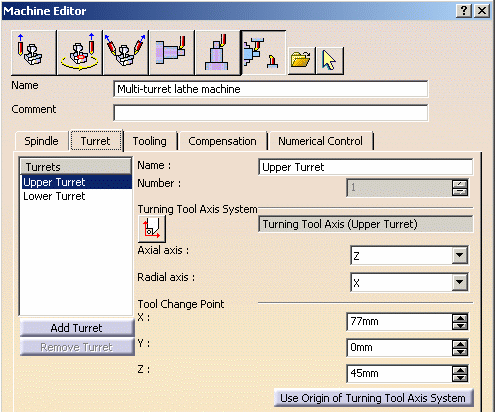
The following dialog box appears:
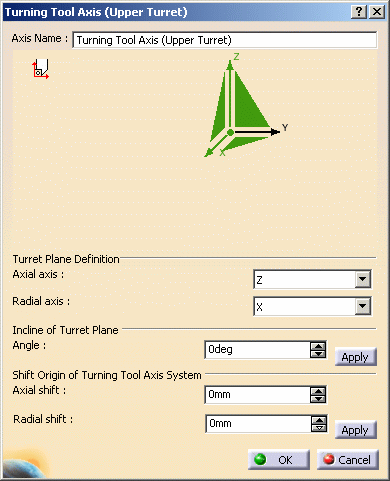
The axial and radial axes define the turret plane.
This parameter defines the incline of Turning Tool Axis System, through its
radial direction.
The angle gives an incline measured from the radial direction of the main spindle
PAS.
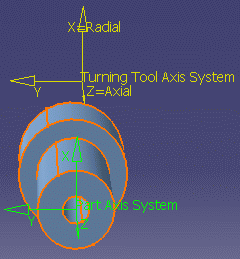
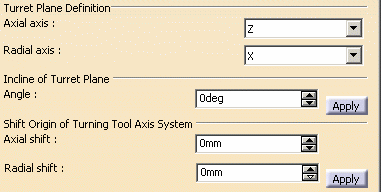
The Turning Tool Axis System is rotated about the spindle axis of the main
spindle PAS.
When applied, the distance between the origin of the Turning Tool Axis System
and the spindle axis of the main spindle PAS is unchanged.
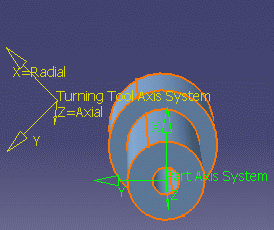
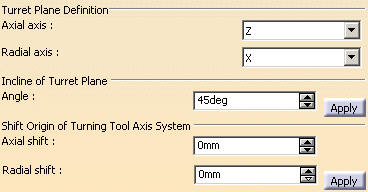
The angle is an absolute angular position measured from the radial direction
of the main spindle PAS (it is not a relative angle from the previous position).
When looking along the spindle axis of the main spindle PAS, the angle is positive
in the counter-clockwise direction and negative in the clockwise direction.
Note that the Angle field is reset to 0, even if the current absolute position of the Turning Tool Axis System is not 0.
This parameter shifts the origin of the Turning Tool Axis System, through
its radial and axial directions.
This shift is done in the turret plane defined by the radial and axial directions
of the Turning Tool Axis System.
Radial shift gives a shift measured from the origin of the main
spindle PAS in the radial direction of Turning Tool Axis System.
The radial shift must not be less than 0. To shift a turret from above to below
the spindle, the incline angle must be used.
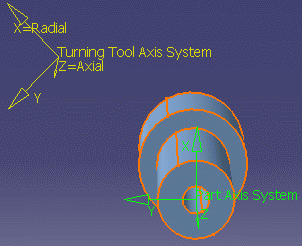
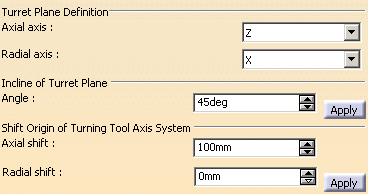
Axial shift gives a shift measured from the origin of the main
spindle PAS in the axial direction of Turning Tool Axis System.
The shift is an absolute position measured from the origin of the main spindle
PAS (it is not a relative position from the previous position).
Note that the Radial and Axial shift fields are reset to 0, even if the current absolute position of the Turning Tool Axis System is not 0.
The Axis System for a Rotary turret is created using the linear and rotary joint definitions on the turret. The rotary and linear joints on the turret determine the axial and radial directions of the turret.
The convention for determining the axis system of a Rotary turret is as follows (not applicable to a Mill-Turn B-axis turret):
Even if the axis system is created incorrectly using the joint definitions, you can still re-orient the turret axis in the correct direction. The re-oriented axis system must be in compliance with the kinematics of the Delmia machine. Otherwise, the Mill-Turn machine simulation may not work correctly.
For a B-axis turret, it is not possible to determine the Radial and Axial directions using the joint definitions. When the machine assigned to the Part Operation is changed from a Multi-Slide Lathe Machine to a Mill-Turn Machine, the corresponding turret axis system of the Multi-Slide Lathe Machine is used for the axis system of the Mill-Turn B-axis turret. In other cases, the axis system of the turret is placed at the origin and the radial & axial directions may not have correct values. So you may need to modify its axis system.